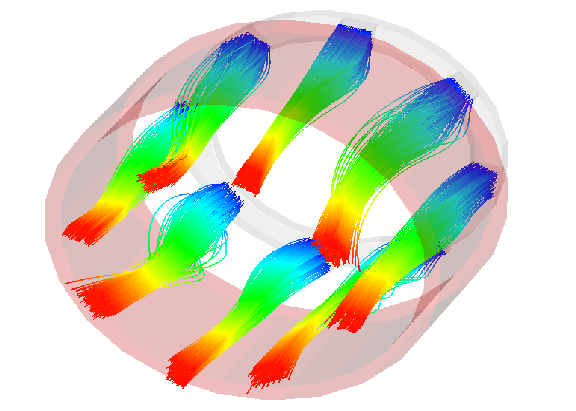


This tracking example demonstrates the analysis of a multibeam gun.Two types of field results are used here: An electrostatic field to accelerate the electrons which are emitted from an assembly of several particle sources. And a magnetostatic field, which is generated by a current driven coil, focuses the electrons so that the particle beams follow the magnetic field lines through the coil.
The cathode consist of a thin PEC-hollow cylinder. The small solids carrying the emitting surfaces are formed by small bricks, arranged on the cathode's perimeter. The curved surface is manufactured by defining a large air-filled sphere which forms the curved emitting surfaces.
The geometric properties of the coils are created with the help of two curves. These curves are defined by use of the local coordinate system.
Three solvers have to be applied to perform the tracking calculation:
First the E-static and M-static solver calculates the E- and M-fields responsible for the external forces pushing the particles. For the setup of the electrostatic problem, the cathode's potential is set to 0 V and the potential of the opposite boundary is set to 10000 V. The magnetic coil is driven by a current of 1000 A and one turn. After the calculation of the electric and magnetic fields has finished, the particle tracking is performed. The chosen fixed emission model ensures a predefined start velocity. After all particles have been tracked, the large amount of particle data for displaying the trajectories is reduced using the resample option.
The trajectory plot dialog box offers the possibility to animate the movement of the particles. Also the particles' space charge and current density can be visualized. The particle source's emitted current is listed in the 1D result tree.